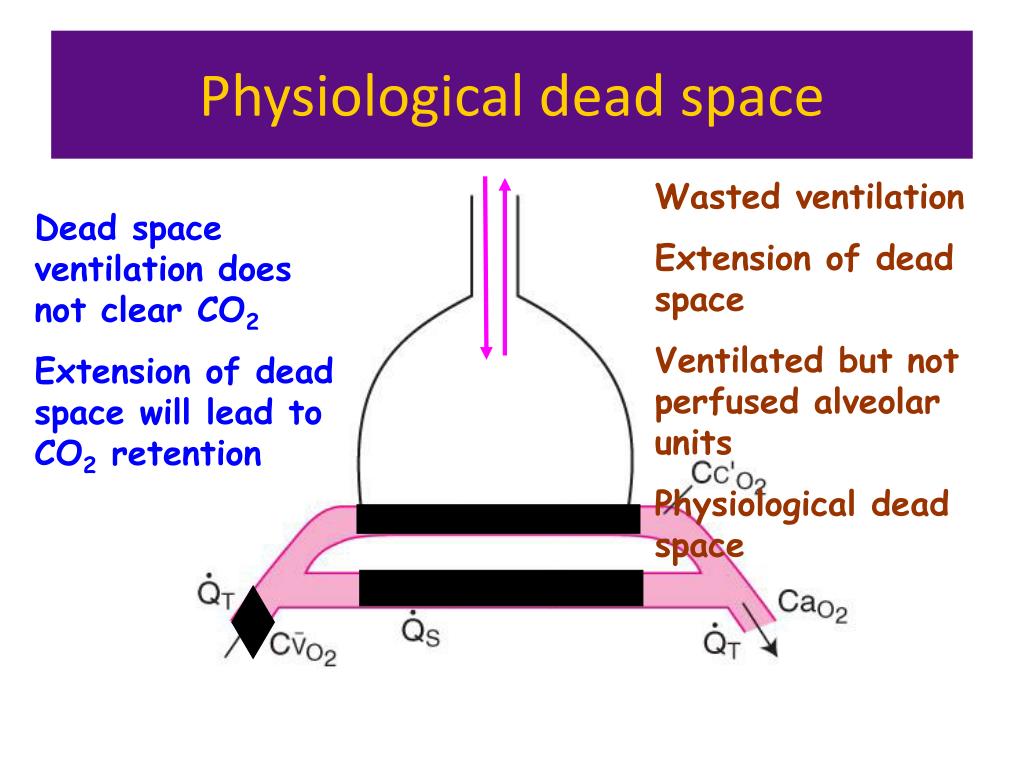

Some apparatus dead space may actually reduce total dead space, as an ETT bypasses the majority of anatomical dead space of the patient (nasopharynx).ĭead space from the patient. Anatomic/Physiologic dead space is the volume of. A certain amount of dead space is normally present in every person (this is known as anatomical dead space: see below). This concept can be extended to include factors that cause a dead space effect.


Types of Dead Spaceĭead space from equipment, such as tubes ventilator circuitry. Functional residual capacity is the volume remaining in the lungs after a normal tidal volume is expired. Definitions Simply put, dead space represents the volume of ventilated air that does not participate in gas exchange. Glomerular Filtration and Tubular Functionĭead space is the proportion of minute ventilation which does not participate in gas exchange. Abstract: Dead space is the portion of each tidal volume that does not take part in gas exchange and represents a good global index of the efficiency of the. Functional Anatomy and Control of Blood Flow An elevated physiological dead space, calculated from measurements of arterial CO2andmixed expired CO2, has proven to be a useful clinical marker of prognosis both for patients with acuterespiratory distress syndrome and for patients with severe heart failure.


 0 kommentar(er)
0 kommentar(er)
